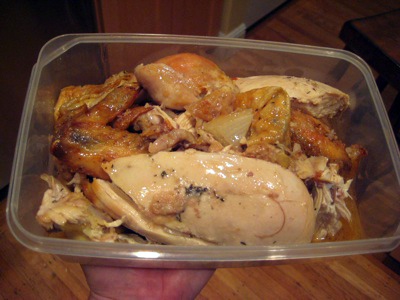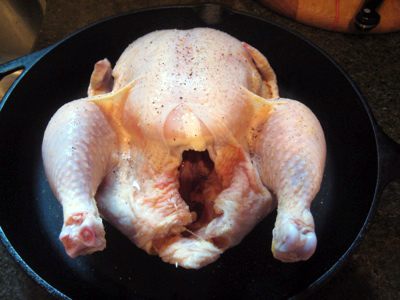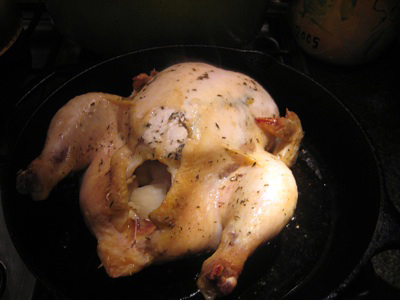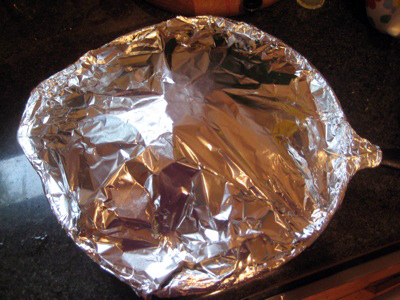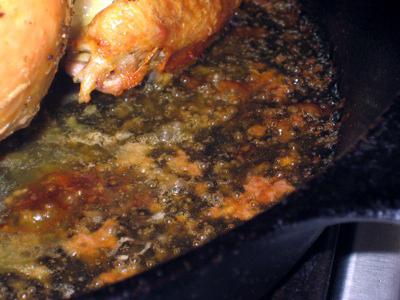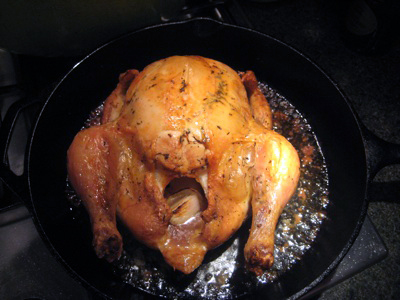
Long long ago (which in this digital age means a few decades prior to now) people used to eat chicken for fancy Sunday suppers. After a day at church, the family would gather around the dinner table. Bobby, with his favorite baseball cap set next to his dish, and Sue, with hair in pigtails, claimed the drumsticks. Meanwhile Mother in her apron and Father in a button-down shirt had their fill of the breasts or thighs. After dinner, Ma would collect the remainder of the chicken -- carcass, drippings and all -- so she could make a nice soup or meat pie later in the week. Doesn’t that sound homey, and well... quaint?
Well, in the modern-day equivalent of this scenario, this is my house on a Sunday (although insert a morning reading the New York Times instead of church, bickering kids who roll their eyes at their parents for the mild-tempered Bobby and Sue, and jeans with t-shirts and sweaters for the clothes. Oh, and toss in a crazy dog and a messy house). I've also been known to make a whole chicken on a Tuesday or Thursday (or, as you've probably picked up by now, any day of the week). So although my version of this American tale is a little different, the premise remains the same: I bake a whole chicken for one dinner, and then wrap up everything (and I mean everything) that is left for another meal (or two) later in the week.
Although my method for cooking chicken was once de rigueur in America, it now seems old fashioned. Chicken, however, is more popular than ever. According to the USDA, "Chicken consumption more than doubled between 1970 and 2004, from 27.4 pounds per person to 59.2 pounds." Yet during this time of increased chicken eating, the tradition of baking a whole bird for a family dinner has almost disappeared.
Most poultry eaters these days simply pick up a package of boneless, skinless chicken breasts at the grocery store (and that’s only if they're actually cooking dinner instead of picking up take-out). They think that not having to deal with those bones makes cooking easier (a notion I will argue in a second). Plus most people are also more interested in the breasts because they have less fat than those delicious thighs and legs. But if you're cooking from scratch (that is, not purchasing something pre-cooked with a ton of fat, salt and starches added to it) one leg or thigh will not clog your arteries or make you fat, especially if you eat it with a large serving of vegetables. According to the Daily Plate (a food calorie site), a thigh has 237 calories, while a grilled skinless breast has 120 calories; sure the calorie count is almost double, but 237 calories for a main part of your dinner is quite good when you consider that a chicken burrito has 334 calories in it. Also, if you eat that chicken breast lightly breaded and fried (as many people will), you jump up to 247 calories with 133 fat calories (the baked thigh has only 12 fat calories). That thigh is no longer looking so fattening, is it?
